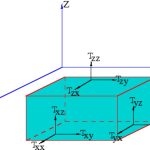The 1700s and early 1800s were a productive period during which the mechanics of simple elastic structural elements were developed—well before the beginnings in the 1820s of the general three-dimensional theory. The development of beam theory by Euler, who generally modeled beams as elastic lines that resist bending, as well as by several members of the Bernoulli family and by Coulomb, remains among the most immediately useful aspects of solid mechanics, in part for its simplicity and in part because of the pervasiveness of beams and columns in structural technology. Jakob Bernoulli proposed in his final paper of 1705 that the curvature of a beam was proportional to its bending moment. Euler in 1744 and Johann’s son, Daniel Bernoulli, in 1751 used the theory to address the transverse vibrations of beams, and in 1757 Euler gave his famous analysis of the buckling of an initially straight beam subjected to a compressive loading; such a beam is commonly called a column. Following a suggestion of Daniel Bernoulli in 1742, Euler in 1744 introduced the concept of strain energy per unit length for a beam and showed that it is proportional to the square of the beam’s curvature. Euler regarded the total strain energy as the quantity analogous to the potential energy of a discrete mechanical system. By adopting procedures that were becoming familiar in analytical mechanics and following from the principle of virtual work as introduced in 1717 by Johann Bernoulli for such discrete systems as pin-connected rigid bodies, Euler rendered the energy stationary and in this way developed the calculus of variations as an approach to the equations of equilibrium and motion of elastic structures.
That same variational approach played a major role in the development by French mathematicians in the early 1800s of a theory of small transverse displacements and vibrations of elastic plates. This theory was developed in preliminary form by Sophie Germain and was also worked on by Siméon-Denis Poisson in the early 1810s; they considered a flat plate as an elastic plane that resists curvature. Claude-Louis-Marie Navier gave a definitive development of the correct energy expression and governing differential equation a few years later. An uncertainty of some duration arose in the theory from the fact that the final partial differential equation for the transverse displacement is such that it is impossible to prescribe, simultaneously, along an unsupported edge of the plate, both the twisting moment per unit length of middle surface and the transverse shear force per unit length. This was finally resolved in 1850 by the Prussian physicist Gustav Robert Kirchhoff, who applied virtual work and variational calculus procedures in the framework of simplifying kinematic assumptions that fibres initially perpendicular to the plate’s middle surface remain so after deformation of that surface.
The first steps in the theory of thin shells were taken by Euler in the 1770s; he addressed the deformation of an initially curved beam as an elastic line and provided a simplified analysis of the vibration of an elastic bell as an array of annular beams. Johann’s grandson, Jakob Bernoulli “the Younger,” further developed this model in the last year of his life as a two-dimensional network of elastic lines, but he could not develop an acceptable treatment. Shell theory did not attract attention again until a century after Euler’s work. The first consideration of shells from a three-dimensional elastic viewpoint was advanced by Hermann Aron in 1873. Acceptable thin-shell theories for general situations, appropriate for cases of small deformation, were then developed by the British mathematician, mechanician, and geophysicist Augustus Edward Hough Love in 1888 and by the British mathematician and physicist Horace Lamb in 1890 (there is no uniquely correct theory, as the Dutch applied mechanician and engineer W.T. Koiter and the Soviet mechanician V.V. Novozhilov clarified in the 1950s; the difference between predictions of acceptable theories is small when the ratio of shell thickness to a typical length scale is small). Shell theory remained of immense interest well beyond the mid-1900s, in part because so many problems lay beyond the linear theory (rather small transverse displacements often dramatically alter the way that a shell supports load by a combination of bending and membrane action) and in part because of the interest in such lightweight structural forms for aeronautical technology.


